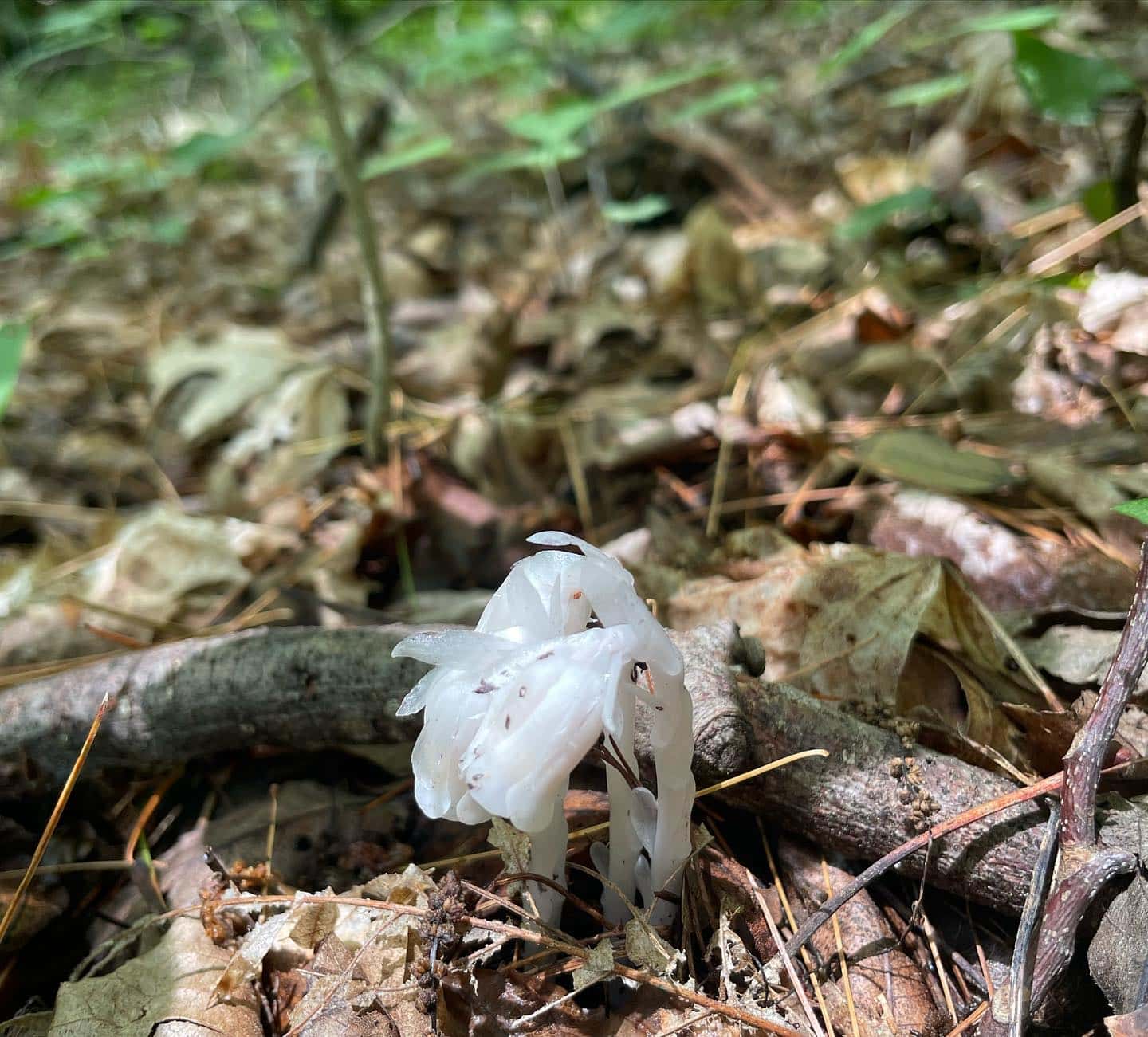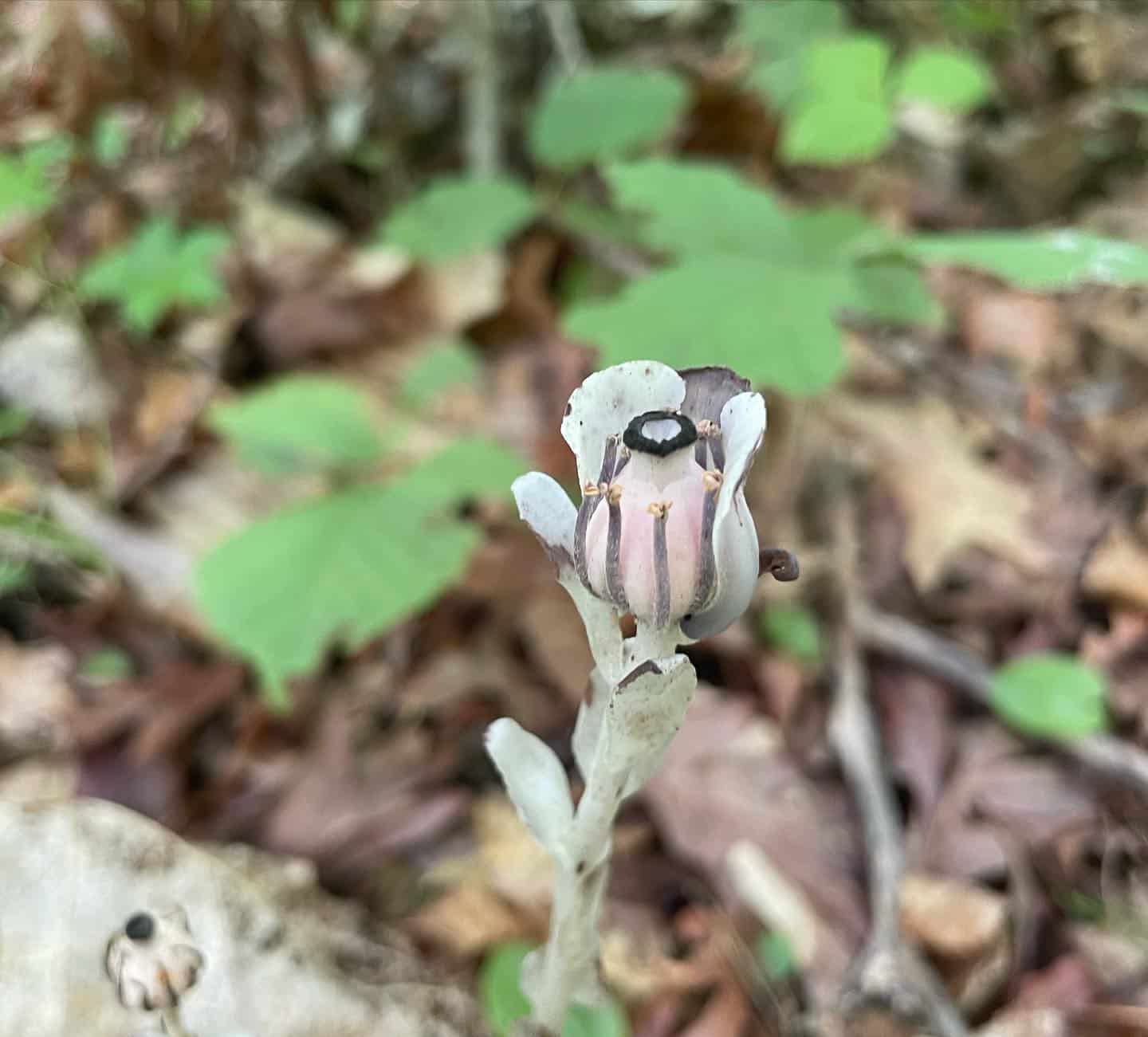Page Created by Connecticut Foraging Club
Upcoming Events | Meet the Instructors | Plant Archive | Mushroom Archive
----------------
Upcoming Events | Meet the Instructors | Plant Archive | Mushroom Archive
----------------
The Ghost Pipe (Monotropa uniflora) is a native plant that lacks chlorophyll. Rather than using photosynthesis, ghost pipes get their nutrients from a fungus in the Russulaceae family, which is getting its nutrients from trees.

Each ghost pipe plant blooms for only 1 week annually. It can be found blooming sometime between late June and September. Each stem bears a single flower which starts pointing downwards. As the flower matures, it gradually becomes upright and then releases seeds and withers away.

Ghost pipes have not been able to be grown from seed at home. They are not listed as endangered in Connecticut, but as a native plant they must be foraged responsibly. Ghost pipe roots should never be pulled up. Stems and flowers should only be collected from areas with large groups of ghost pipes. Collect less than 25% of the plants in these areas.

Some people will eat ghost pipes, but they are mildly toxic due to multiple glycosides. Ghost pipes are more commonly used as a medicinal plant. Flowers can be collected when still looking downward and turned into a tincture for unrelenting pain, anxiety, and as an antispasmodic. Ghost pipes create a very strong medicine and must be used in very small doses.
--
Written by Amy Demers, founder of the Connecticut Foraging Club. To learn more about foraging in Connecticut, check out our upcoming classes.






